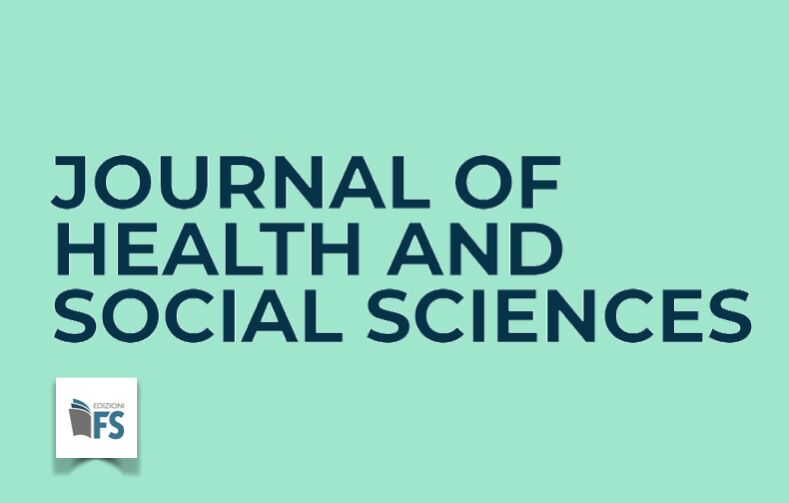Guidelines for Authors
The Italian Journal of Psychology and Occupational Medicine (GIPMeL) publishes the following contributions in Italian or English: original articles, case reports, editorials, current notes, literature reviews, commentaries, and letters in the field of work and organizational psychology, occupational medicine, and related areas. The works must not have been previously published elsewhere, nor should they be under consideration by other journals. Editorials are commissioned by the editorial and scientific board of GIPMeL. Contributions such as commentaries, original articles, case reports, literature reviews (narrative, systematic reviews, meta-analyses), and letters to the editor can be submitted for potential publication in the journal. The journal also accepts contributions on topics subject to regulatory and/or legal debate, as commentaries in the “Open Issues” section.
The average time from submission to final decision is about 60 days. The authors should use our GIPMeL template and sign the cover letter. We accept only word files (please, do not use pdf files).
Bibliography
The corresponding author is responsible for the accuracy and completeness of the provided bibliography list. All bibliographic citations (“references”) should be indicated in the text using Arabic numerals in square brackets, for example: [1, 2, 3-6], and then listed at the end of the article in a specific section titled “References” in the order they appear. The journal follows the “Vancouver style” citation format, in line with the recommendations of the International Committee of Medical Journal Editors, as defined in the “Uniform Requirements for Manuscripts Submitted to Biomedical Journals: Sample References, 2013,” which can be freely downloaded from the website http://www.nlm.nih.gov/bsd/uniform_requirements.html. The titles of cited journals should not be italicized and should be abbreviated according to the Medline instructions provided by the US National Library of Medicine (www.nlm.nih.gov/bsd/aim.html). If online journals are cited, the DOI number should also be included in addition to the citation. If a cited article has more than 3 authors, only the first 3 should be listed, followed by “et al.” Page numbers should not be abbreviated but provided in full.
Below are some examples:
- Petrie KJ, Muller JT, Schirmbeck F, et al. Effect of providing information about normal test results on patients’ reassurance: randomised controlled trial. Br Med J. 2007;334(7589):352–254.
- Mason J. Concepts in dental public health. Philadelphia: Lippincott Williams & Wilkins; 2005.
- Partridge H, Hallam G. Evidence-based practice and information literacy. In: Lipu S, Williamson K, Lloyd A. (eds.) Exploring methods in information literacy research. Wagga Wagga, Australia: Centre for Information Studies; 2007. p. 149–170.
Please note the following graphic peculiarities in the references: 1) Initials of the authors’ names are without periods; 2) Abbreviations of journal titles are without punctuation; 3) Do not use any italics or bold formatting.
Linee Guida per gli Autori
Il Giornale Italiano di Psicologia e Medicina del Lavoro (GIPMeL) pubblica i seguenti contributi in italiano o in inglese: articoli originali, casi clinici, editoriali, note di attualità, revisioni di letteratura, commentari e lettere nell’ambito della psicologia del lavoro e delle organizzazioni, della medicina del lavoro e delle aree correlate. I lavori non devono essere stati già pubblicati altrove nè devono essere presi in considerazione presso altre riviste. Gli editoriali sono commissionati dalla redazione editoriale e scientifica del GIPMeL. Possono essere inviati come contributi per l’eventuale pubblicazione sulla rivista commentari, articoli originali, casi clinici, revisioni di letteratura (narrative, revisioni sistematiche, metanalisi), lettere all’editore. La rivista accetta anche contributi su tematiche oggetto di dibattito normativo e/o giuridico, come commentari nella rubrica “Questioni aperte”.
Il tempo medio dalla sottomissione alla decisione finale è di circa 60 giorni. Gli autori dovrebbero utilizzare il nostro TEMPLATE e firmare la lettera di presentazione. Accettiamo file in formato Word (per favore, non utilizzare file in formato pdf).
Bibliografia
L’autore per la corrispondenza è responsabile dell’accuratezza e completezza della lista bibliografia fornita. Tutte le citazioni bibliografiche (“references”) devono essere indicate nel testo in numeri arabi in parentesi quadre, per esempio: [1, 2, 3-6] e poi riportate alla fine dell’articolo in una sezione specifica definita “References” nell’ordine in cui esse appaiono. Come stile citazionale la rivista utilizza il “Vancouver style”, in linea con le raccomandazioni dell’International Committee of Medical Journal Editors, definite “Uniform Requirements for Manuscripts Submitted to Biomedical Journals: Sample References, 2013” che possono essere liberamente scaricate al sito http://www.nlm.nih.gov/bsd/uniform_requirements.html. I titoli delle riviste citate non devono essere scritti in corsivo e devono essere abbreviate secondo le indicazioni di Medline date dalla US National Library of Medicine (www.nlm.nih.gov/bsd/aim.html). Se si citano riviste on line, in aggiunta alla citazione dovrebbe essere riportato anche il numero DOI. Se l’articolo citato ha più di 3 nomi, dovrebbero essere citati i primi 3 seguiti dalla dicitura “et al.”. I numeri di pagina non devono essere abbreviate ma riportati per intero.
Riportiamo qui di seguito alcuni esempi:
- Petrie KJ, Muller JT, Schirmbeck F, et al. Effect of providing information about normal test results on patients’ reassurance: randomised controlled trial. Br Med J. 2007;334(7589):352–254.
- Mason J. Concepts in dental public health. Philadelphia: Lippincott Williams & Wilkins; 2005.
- Partridge H, Hallam G. Evidence-based practice and information literacy. In: Lipu S, Williamson K, Lloyd A. (eds.) Exploring methods in information literacy research. Wagga Wagga, Australia: Centre for Information Studies; 2007. p. 149–170.
Si notino alcune particolarità grafiche nelle references: 1) le iniziali dei nomi non hanno punto; 2) le abbreviazioni dei titoli delle riviste sono senza punteggiatura; 3) non usare alcun carattere corsivo, né grassetto.
Prima di inviare l’articolo si consiglia di effettuare un ultimo controllo per assicurarsi che i suggerimenti di cui sopra siano stati effettivamente rispettati al link qua sotto.
Before the submission, please check our guidelines for authors:
SCARICA LE LINEE GUIDA PER GLI AUTORI
USA IL TEMPLATE GIPMeL PER SCRIVERE E PROPORRE IL TUO ARTICOLO

